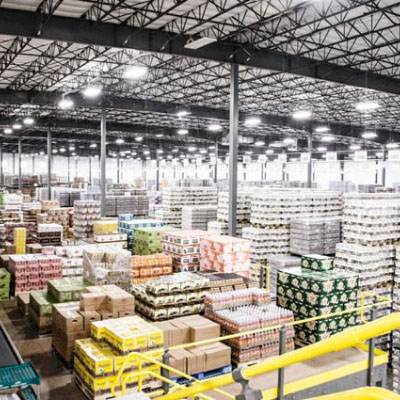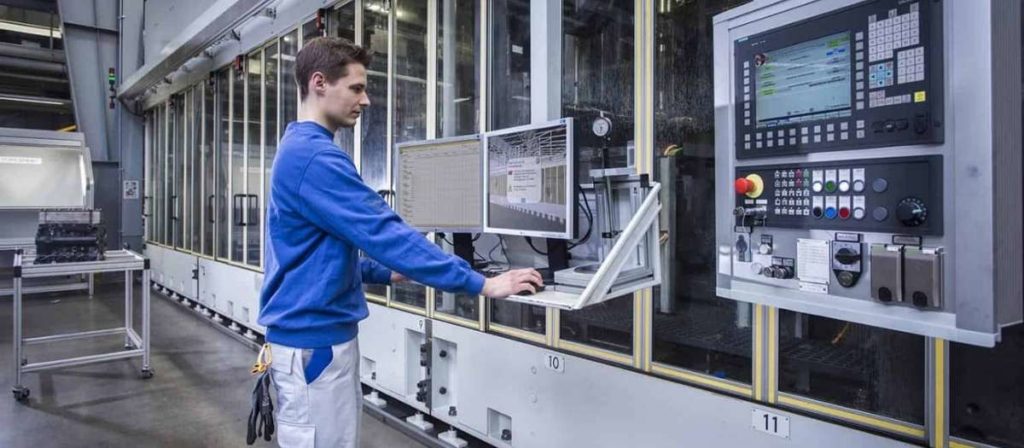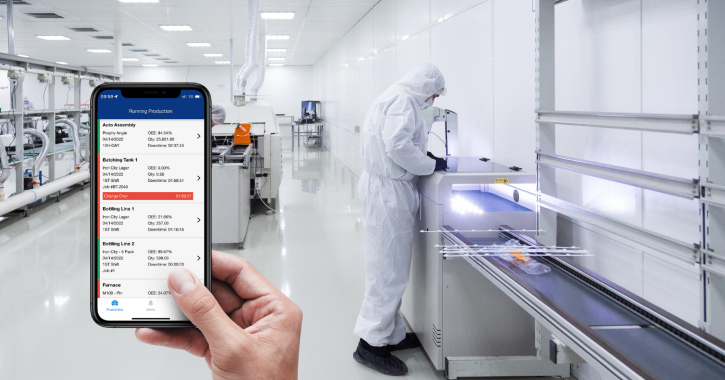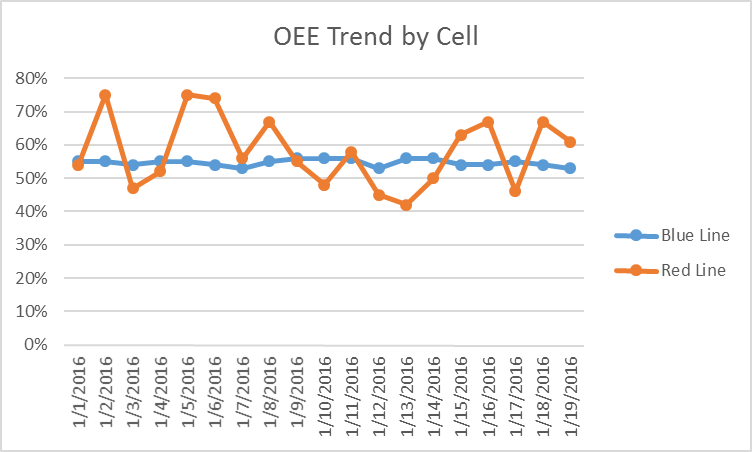Implementing a production monitoring system in the food and beverage industry gives manufacturers the ability to meet production targets and deliver on time, without compromising quality.
The importance of production monitoring cannot be overstated in the face-paced and highly regulated world of food and beverage. Efficient production processes are not only vital for meeting consumer demands. Real time data analysis plays a crucial role in ensuring compliance with strict quality and safety standards.

Monitoring solutions are key to solve potential problems as they occur and mitigate risk. Bryan Sapot, Mingo Smart Factory CEO, talks with FoodBev Magazine about the importance of solutions like Mingo in the plant.
Production monitoring in the food and beverage industry involves the systematic tracking and analysis of various aspects of the manufacturing process. This includes monitoring equipment performance, production rates, inventory levels, and adherence to quality and safety standards. The overarching goal is to ensure seamless operations, prevent downtime, and maintain the highest levels of product quality.
One of the primary roles of production monitoring is to guarantee the quality of food and beverage products. Monitoring systems are equipped to detect deviations from quality standards, enabling swift corrective actions. This proactive approach helps prevent defective products from reaching consumers and safeguards brand reputation.

The food and beverage industry is subject to stringent regulatory requirements. Production monitoring systems assist in ensuring compliance with these standards by providing accurate and real-time data on ingredients, processes, and final products. Additionally, they facilitate traceability, allowing manufacturers to swiftly identify and recall products in the event of a safety concern.

Production monitoring is a cornerstone of operational efficiency. Manufacturers can identify bottlenecks and optimize resource allocation by tracking equipment performance and production rates. This leads to reduced downtime, improved overall equipment effectiveness (OEE), and enhanced utilization of production resources.

While production monitoring itself is crucial, real-time data analysis elevates its impact to a whole new level. In the dynamic environment of the food and beverage industry, where conditions can change rapidly, the ability to analyze data in real-time provides several key advantages.
Real-time data analysis allows for the instant identification of issues on the production line. Some examples include a sudden drop in production rates, equipment malfunctions, or deviations from quality standards. With alerts, manufacturers can address problems promptly to minimize the impact on overall operations.

Waiting for periodic reports is a luxury that modern manufacturing cannot afford. Real-time data analysis empowers decision-makers to act proactively. Managers can make informed decisions on the fly, adjusting production schedules, reallocating resources, or implementing corrective measures in real time.

Real-time data analysis is instrumental in maximizing OEE by providing insights into equipment performance and identifying opportunities for improvement. This leads to optimized maintenance schedules, reduced downtime, and increased productivity.

Consumer preferences and market demands can change rapidly in the food and beverage industry. Real-time data analysis enables manufacturers to adapt quickly to fluctuations in demand, helping them stay ahead of the competition and meet consumer expectations.

In conclusion, the role of production monitoring in the food and beverage industry is multifaceted, encompassing quality assurance, compliance, and efficiency. However, it is the integration of real-time data analysis that truly unlocks the full potential of production monitoring systems. The ability to swiftly identify and address issues, make proactive decisions, and adapt to changing market conditions positions manufacturers for success in a competitive and dynamic industry landscape. Embracing advanced production monitoring technologies with a focus on real-time data analysis is not just a choice but a strategic imperative for those aiming to thrive in the food and beverage sector.
Mingo Smart Factory CEO, Bryan Sapot, provides his point of view into the world of digital technology on the factory floor. Read why real-time feedback, KPIs, tracking performance, and doing so with transparency is vital in today’s manufacturing workplace.

It provides powerful and useful information that we can use to immediately impact our efficiencies.
Villari Food Gorup
There’s no question – food and beverage manufacturing is changing rapidly. With the rise of Industry 4.0, the new buzzword on everyone’s mind is “big data“. But, what do you do with it, and how does it apply to the food manufacturers, beverage manufacturers, or even pet food manufacturers?
Each food and beverage manufacturer has unique safety, regulatory, and customer requirements that must be fulfilled. Tracking those requirements accurately, and in real-time, provides the biggest benefit for meeting standards and continuous improvement. Good data management is now essential for accurately tracking and linking all products to a specific source or batch.
In the food processing industry, quality, yield, headcount, labor units per hour, and units per hour produced are all important metrics. Food and beverage software can help provide actionable insights into the production process and help to ensure all standards, including quality and yield, are met.
Many regulations require exact data about the production of food, beverage, and pet food products, and if you consider the amount of product produced on a daily basis, it can get very complicated quickly. It’s important for manufacturers to have precise data and understanding of the product being manufactured. The solution is data analytics and management.
Manufacturers have long relied on data collection through manual means – a person watching the machine to measure cycle time, calculating OEE offline, and reporting data through manually created excel spreadsheets. Those manual processes have not changed throughout the years, but as big data becomes widely adopted, data collection will need to be modernized, too. These processes will need to be automated. Not only does automation reduce mistakes and time spent on non-value-added tasks, but it increases understanding of what’s happening, in real-time. With food and beverage software, real visibility on the plant floor is possible.
There are a couple of examples of manufacturing productivity software in use that may help persuade you of the benefits.
Example 1: Consider the implications of a filler being faster than a capper. Track not only what is on the line of an accumulator table, but each station. You will be able to understand where the bottlenecks are and how they move around. Process technologies and packaging can become more efficient.
Example 2: The software can connect to the check weighers to not only count how much product is produced but if any product was rejected for being under or overweight. Gain insights by gathering the weight data into the software and look at trends over time to see if there is a problem with the filler.
Example 3: Many people are needed to assist on the production lines. With Mingo, you can track how many people are on the line at any given time, calculate output per person, and determine labor efficiency per person. The data can help you figure out the optimized number of people for any line, and how being short-staffed will affect production.
Understanding and evaluating the performance of key performance indicators for food companies (KPIs) by plant, machine, metric, process, shift, etc. will help set your business apart from your competitors. With real-time, accurate analysis of virtually any food processing data and metrics you need, performing routine monitoring becomes simple and uncomplicated. Food and beverage manufacturing software provide you the ability to eliminate the need to rely on reactive decision-making based on manual data collection. Get insights needed to:
All of the data collected can help inform decisions for future productivity with the use of automated reporting and visual dashboards. With manufacturing productivity software, you’ll be maximizing resources, unlocking valuable insights, and ensuring ongoing visibility into your factory floor. The traditional methods are transforming, evolving to help food and beverage manufacturers achieve their goals, with complete visibility. By implementing a software solution that can provide visibility, you’ll be growing leaps and bounds above the competition.
Choosing a software solution to help you increase efficiencies and improve productivity in the plant is a very unique process. You have goals you need to achieve and deadlines to meet so whichever software you choose, has to help you do that. While we encourage you to explore everything Mingo has to offer, you need to have an idea of what you want to accomplish before actually selecting software.
There are particular questions you need to consider before moving forward. What is your price point? Does the software fit within your budget? What is the implementation process like? Do you need someone to spearhead the project or will the company handle that? Specifically, how will it help you achieve your goals? Have they worked with manufacturers in your industry before? While these are only a few examples, there’s a lot of research that needs to be done before signing on the dotted line.
However, Mingo can provide visibility to the following industries: food, beverage, including soda or soft drinks, bottled water, pet food, breweries, etc. Mingo’s focus is not limited to one particular industry but can be applied to virtually any food manufacturing or beverage manufacturing industry. If you have any questions, please don’t hesitate to reach out to our team of manufacturing experts. We’re happy to help.
Look closely at is exactly why you were able to increase OEE. If you fully understand the mechanisms behind the increase you can determine if improvements are permanent, seasonal, or part of a larger, more complex process, etc. Knowing this information could help you make improvements in other parts of your business.
Yes, we have a mobile app designed to give you insight into the plant, even when you’re not there. Get completely configurable real-time alerts that help you understand what’s happening. Get notified, and escalate the issue as needed, when a machine is down or scrap is too higher. Alerts can be customized to the metrics you care about.
Mingo also has the capability to send manufacturing insights emails to provide automatic reporting. Summarizing the end of the shift, end of the day, or end of the week numbers, these emails eliminate the need for manual, tedious reporting. Additionally, scoreboards throughout the plant provide visibility at a glance, telling operators and managers alike, if they’re ahead or behind the target. Operator screens on machines, stations, or lines help operators know how they’re performing at any given moment.
Built by people who know manufacturing, Mingo Smart Factory provides the 21st century “Smart Factory” experience that manufacturers need to grow in a modern environment. See how it can help you drive revenue.
© Copyright 2024 Mingo Smart Factory » Privacy